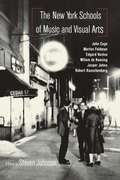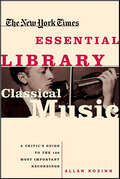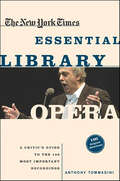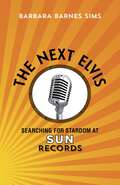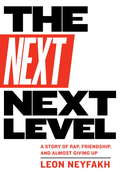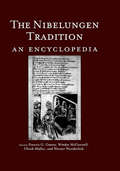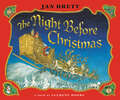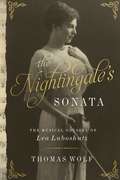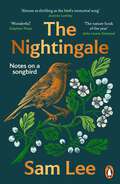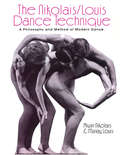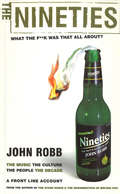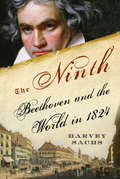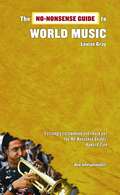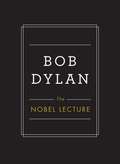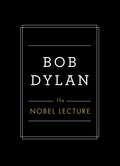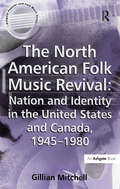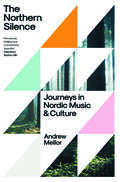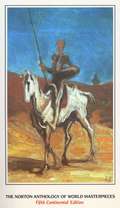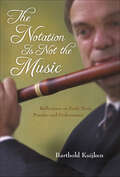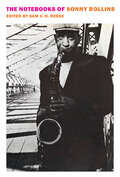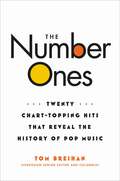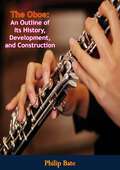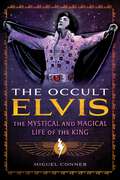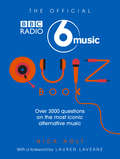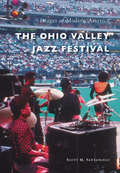- Table View
- List View
The New York Schools of Music and the Visual Arts
by Willem De Kooning John Cage Morton Feldman Edgard Varèse Jasper Johns Robert RauschenbergMusicians and artists have always shared mutual interests and exchanged theories of art and creativity. This exchange climaxed just after World War II, when a group of New York-based musicians, including John Cage, Morton Feldman, Earle Brown, and David Tudor, formed friendships with a group of painters. The latter group, now known collectively as either the New York School or the Abstract Expressionists, included Jackson Pollock, Willem deKooning, Robert Motherwell, Mark Rothko, Barnett Newman, Clyfford Still, Franz Kline, Phillip Guston, and William Baziotes. The group also included a younger generation of artists-particularly Robert Rauschenberg and Jasper Johns-that stood somewhat apart from the Abstract Expressionists. This group of painters created what is arguably the first significant American movement in the visual arts. Inspired by the artists, the New York School composers accomplished a similar feat. By the beginning of the 1960s, the New York Schools of art and music had assumed a position of leadership in the world of art. For anyone interested in the development of 20th century art, music, and culture, The New York Schools of Music and Art will make for illuminating reading.
The New York Times Essential Library: Classical Music
by Allan KozinnA dazzling appraisal of the definitive classical music performances available todayFor classical music lovers, there is nothing more beguiling and exciting than the range of technique and emotion that can capture or transform the great works in the hands of a conductor and musicians. But with hundreds of recordings released every year, discovering the jewels is a challenge, for newcomers as well as for connoisseurs.New York Times classical music critic Allan Kozinn offers the ultimate collector's guide, packed with a rich history of the composers and performers who stir our souls. From Bach's eloquent Goldberg Variations performed by master pianist Glenn Gould at the beginning and end of his career in startlingly different interpretations, to a lyrical performance of Rimsky-Korsakov's Scheherezade conducted by Kiril Kondrashin shortly after his defection from the Soviet Union, Kozinn places each work in the greater context of musical development and stretches the listener's understanding of each pivotal composition. These original essays on the one hundred greatest recorded classical works provide both practical guidance for building a library and deep insight into the transcendent power of music itself.
The New York Times Essential Library: Opera (The New York Times Essential Library)
by Anthony TommasiniAn insightful, provocative selection of the best opera performances, chosen by The New York Times's chief classical music critic in one hundred original essaysOpera intertwines the drama of the theater with the powerful emotionality of music. In this magical and illuminating guide to the best opera recordings, Anthony Tommasini delves into the ways story and music interweave to create the subtle but telling moments that move us. Tommasini brings to life the rich history of opera performance and the singers and conductors who, over the past century, have come to own the music. He chooses masterworks, such as Arturo Toscanini's La Boheme, captured for posterity fifty years after he conducted the opera's 1896 premiere for Puccini, and Leontyne Price's Leonora in Il Trovatore, an encapsulation of the ideal Verdi soprano. For aficionados and newcomers alike, Tommasini is the perfect guide to the passions and playfulness of the opera.
The Next Elvis: Searching for Stardom at Sun Records
by Barbara Barnes SimsAn American institution, Sun Records has a history with many chapters -- its Memphis origins with visionary Sam Phillips, the breakthrough recordings of Elvis Presley, and the studio's immense influence on the sound of popular music. But behind the company's chart toppers and legendary musicians there exists another story, told by Barbara Barnes Sims. In the male-dominated workforce of the 1950s, 24-year-old Sims found herself thriving in the demanding roles of publicist and sales promotion coordinator at Sun Records. Sims's job placed her in the studio with Johnny Cash, Roy Orbison, Jerry Lee Lewis, Charlie Rich, Carl Perkins, and other Sun entertainers, as well as the unforgettable Phillips, whose work made the music that defined an era.The Next Elvis: Searching for Stardom at Sun Records chronicles Sims's career at the studio, a pivotal time at this recording mecca, as she darted from disc jockeys to distributors. Sims not only entertains with personal stories of big personalities, but also brings humor to the challenges of a young woman working in a fast and tough industry.Her disarming narrative ranges from descriptions of a disgraced Jerry Lee Lewis to the remarkable impact and tragic fall of DJ Daddy-O Dewey to the frenzied Memphis homecoming of Elvis after his military service. Collectively, these vignettes offer a rare and intimate look at the people, the city, and the studio that permanently shifted the trajectory of rock 'n' roll.
The Next Next Level
by Leon NeyfakhIn the tradition of Carl Wilson's Let's Talk About Love, an unforgettable account of fame, fandom, and the problem of making art in the twenty-first century In his multi-hyphenate ambitions, the musician who calls himself Juiceboxxx couldn't be more modern--you might call him a punk rock-rapper-DJ-record executive-energy drink-magnate. Journalist Leon Neyfakh has been something more than a fan of Juiceboxxx's since he was a teenager, when he booked a show for the artist in a church basement in his hometown of Oak Park, Illinois. Juiceboxxx went on to the tireless, lonely, possibly hopeless pursuit of success on his own terms--no club was too dank, no futon too grubby, if it helped him get to the next, next level. And, for years, Neyfakh remained haunted from afar: was art really worth all the sacrifices? If it was, how did you know you'd made it? And what was the difference, anyway, between a person like Juiceboxxx--who devoted his life to being an artist--and a person like Neyfakh, who elected instead to pursue a stable career and a comfortable, middle-class existence? Much more than a brilliant portrait of a charismatic musician always on the verge of something big, The Next Next Level is a wholly contemporary story of art, obsession, fame, ambition, and friendship--as well as viral videos, rap-rock, and the particulars of life on the margins of culture.From the Trade Paperback edition.
The Nibelungen Tradition: An Encyclopedia (Reference Library Of The Humanities)
by Francis G. Gentry Winder McConnell Ulrich Muller Werner WunderlichWithin the English-speaking world, no work of the German High Middle Ages is better known than the Nibelungenlied, which has stirred the imagination of artists and readers far beyond its land of origin. Its international influence extends from literature to music, art, film, politics and propaganda, psychology, archeology, and military history.Now
The Night Before Christmas
by Jan Brett Clement Clarke MooreJan Brett's Christmas classic is a visual masterpiece!Jan Brett's exquisite interpretation of "The Night Before Christmas" has been a holiday classic since it was first published in 1998. Not only will readers delight in watching St. Nick delivering his presents to the family, but they will love the addition to two elf stowaways from the North Pole, creating mischief and mayhem under a brilliant midnight sky."Another holiday keepsake from a master." - Publishers Weekly, starred review
The Nightingale's Sonata: The Musical Odyssey Of Lea Luboshutz
by Thomas WolfA moving and uplifting history set to music that reveals the rich life of one of the first internationally renowned female violinists Spanning generations, from the shores of the Black Sea to the glittering concert halls of New York, The Nightingale's Sonata is a richly woven tapestry centered around violin virtuoso Lea Luboshutz. Like many poor Jews, music offered an escape from the prejudices that dominated society in the last years of the Russian Empire. But Lea’s dramatic rise as an artist was further accentuated by her scandalous relationship with the revolutionary Onissim Goldovsky. As the world around them descends in to chaos, between revolution and war, we follow Lea and her family from Russia to Europe and eventually, America. We cross paths with Pablo Casals, Isadora Duncan, Emile Zola and even Leo Tolstoy. The little girl from Odessa will eventually end up as one of the founding faculty of the prestigious Curtis Institute of Music, but along the way she will lose her true love, her father, and watch a son die young. The Iron Curtain would rise, but through it all, she plays on. Woven throughout this luminous odyssey is the story is César Franck’s “Sonata for Violin and Piano," a work championed by Lea, one of the first-ever internationally recognized female violinists. It became a touchstone for her, for her multi-generational family of musicians, and for scores of her students who played this masterwork throughout the world.
The Nightingale: ‘The nature book of the year’
by Sam Lee'Wondering and wonderful. The nature book of the year.' JOHN LEWIS-STEMPEL'This lovely book is almost as thrilling as the bird's immortal song - balm for a troubled soul and a glimpse of paradise.' JOANNA LUMLEY______________________________Come to the forest, sit by the fireside and listen to intoxicating song, as Sam Lee tells the story of the nightingale.Every year, as darkness falls upon woodlands, the nightingale heralds the arrival of Spring. Throughout history, its sweet song has inspired musicians, writers and artists around the world, from Germany, France and Italy to Greece, Ukraine and Korea. Here, passionate conservationist, renowned musician and folk expert Sam Lee tells the story of the nightingale. This book reveals in beautiful detail the bird's song, habitat, characteristics and migration patterns, as well as the environmental issues that threaten its livelihood.From Greek mythology to John Keats, to Persian poetry and 'A Nightingale Sang in Berkeley Square', Lee delves into the various ways we have celebrated the nightingale through traditions, folklore, music, literature, from ancient history to the present day. The Nightingale is a unique and lyrical portrait of a famed yet elusive songbird.______________________________'Sam Lee has brought the poetic magic that has long enchanted so many of his musical fans into the written word. Allow yourself to glimpse the world Sam sees, to be part of his love affair with the nightingale, and you will no doubt be delighted.' LILY COLE'A wonderful book.' STEPHEN MOSS'A magical marriage of the lyrical and practical: a book that makes us want to seek out the nightingale and then reveals how we can.' TRISTAN GOOLEY
The Nikolais/Louis Dance Technique: A Philosophy and Method of Modern Dance
by Murray Louis Alwin NikolaisFirst Published in 2005. Routledge is an imprint of Taylor & Francis, an informa company.
The Nineties: What the F**ck Was That All About?
by John RobbIF YOU REMEMBER THE NINETIES...YOU WERE THERE!The Rock 'N' Roll Fifties. The Swinging Sixties. The trashy Seventies. The money-grabbing Eighties. There is a neat bunch of clichés for every era, but THE NINETIES...What the f**k was that all about?John Robb takes us on a personal odyssey through the definitive pop cultural moments that shaped the decade in the UK.
The Ninth: Beethoven and the World in 1824
by Harvey Sachs"All men become brothers . . . Be embraced, ye millions!" The Ninth Symphony, a symbol of freedom and joy, was Beethoven's mightiest attempt to help humanity find its way from darkness to light, from chaos to peace. Yet the work was born in a repressive era, with terrified Bourbons, Hapsburgs, and Romanovs using every means at their disposal to squelch populist rumblings in the wake of the French Revolution and Napoleon's wars. Ironically, the premiere of this hymn to universal brotherhood took place in Vienna, the capital of a nation that Metternich was turning into the first modern police state.The Ninth's unveiling, on May 7, 1824, was the most significant artistic event of the year, and the work remains one of the most precedent-shattering and influential compositions in the history of music--a reference point and inspiration that resonates even today. But in The Ninth, eminent music historian Harvey Sachs demonstrates that Beethoven was not alone in his discontent with the state of the world. Lord Byron died in 1824 during an attempt to free Greece from the domination of the Ottoman empire; Delacroix painted a masterpiece in support of that same cause; Pushkin, suffering at the hands of an autocratic czar, began to draft his anti-authoritarian play Boris Godunov; and Stendhal and Heine wrote works that mocked conventional ways of thinking.The Ninth Symphony was so unorthodox that it amazed and confused listeners at its premiere--described by Sachs in vibrant detail--yet it became a standard for subsequent generations of creative artists, and its composer came to embody the Romantic cult of genius. In this unconventional, provocative new book, Beethoven's masterwork becomes a prism through which we may view the politics, aesthetics, and overall climate of the era.Part biography, part history, part memoir, The Ninth brilliantly explores the intricacies of Beethoven's last symphony--how it brought forth the power of the individual while celebrating the collective spirit of humanity. From the Hardcover edition.
The No-Nonsense Guide to World Music
by Louise Gray"World music" is an awkward phrase. Used to describe the hugely multifaceted nature of a range of typically non-English-language popular music from the world over, it's a tag that throws up as many problems as it does solutions.Louise Gray's The No-Nonsense Guide to World Music attempts to go behind the phrase to explore the reasons for the contemporary interest in world music, who listens to it, and why. Through chapters that focus on specific areas of music, such as rembetika, fado, trance music, and new folk, Gray explores the genres that have emerged from marginalized communities, music in conflict zones, and music as escapism.In this unique guide, which combines the seduction of sound with politics and social issues, the author makes the case for music as a powerful tool able to bring individuals together.Louise Gray is a writer and editor whose work on music and performing arts has appeared in the New Internationalist, The Wire, The Independent on Sunday, the Guardian, and Art Review. She co-edited Sound and the City (British Council, 2007), a book exploring the changing soundworld of China.
The Nobel Lecture
by Bob DylanOn October 13, 2016, it was announced that Bob Dylan had been awarded the Nobel Prize for Literature, recognizing his countless contributions to music and letters over the last fifty years. Some months later, he delivered a lecture that will now be available in book form for generations to come. In it, he reflects on his life and experience with literature, giving readers a rare and intimate look at an American icon. From being inspired by Buddy Holly to the novels that helped shape his own approach to writing (The Odyssey, Moby Dick, and All Quiet on the Western Front), this is Dylan like you've never seen him before.
The Nobel Lecture
by Bob DylanPublished for the first time in a beautiful collectible edition, the essential lecture delivered by the 2016 recipient of the Nobel Prize in Literature, Bob Dylan.On October 13, 2016, Bob Dylan was awarded the Nobel Prize in Literature, recognizing his countless contributions to music and letters over the last fifty years. Some months later, he delivered an acceptance lecture that is now memorialized in book form for generations to come. In The Nobel Lecture, Dylan reflects on his life and experience with literature, providing both a rare artistic statement and an intimate look at a uniquely American icon. From finding inspiration in the music of Buddy Holly and Leadbelly to the works of literature that helped shape his own approach to writing—The Odyssey, Moby-Dick, and All Quiet on the Western Front—this is Dylan like you’ve never seen him before.
The North American Folk Music Revival: Nation and Identity in the United States and Canada, 1945–1980 (Ashgate Popular and Folk Music Series)
by Gillian MitchellThis work represents the first comparative study of the folk revival movement in Anglophone Canada and the United States and combines this with discussion of the way folk music intersected with, and was structured by, conceptions of national affinity and national identity. Based on original archival research carried out principally in Toronto, Washington and Ottawa, it is a thematic, rather than general, study of the movement which has been influenced by various academic disciplines, including history, musicology and folklore. Dr Gillian Mitchell begins with an introduction that provides vital context for the subject by tracing the development of the idea of 'the folk', folklore and folk music since the nineteenth century, and how that idea has been applied in the North American context, before going on to examine links forged by folksong collectors, artists and musicians between folk music and national identity during the early twentieth century. With the 'boom' of the revival in the early sixties came the ways in which the movement in both countries proudly promoted a vision of nation that was inclusive, pluralistic and eclectic. It was a vision which proved compatible with both Canada and America, enabling both countries to explore a diversity of music without exclusiveness or narrowness of focus. It was also closely linked to the idealism of the grassroots political movements of the early 1960s, such as integrationist civil rights, and the early student movement. After 1965 this inclusive vision of nation in folk music began to wane. While the celebrations of the Centennial in Canada led to a re-emphasis on the 'Canadianness' of Canadian folk music, the turbulent events in the United States led many ex-revivalists to turn away from politics and embrace new identities as introspective singer-songwriters. Many of those who remained interested in traditional folk music styles, such as Celtic or Klezmer music, tended to be very insular and conservative in their approach, rather than linking their chosen genre to a wider world of folk music; however, more recent attempts at 'fusion' or 'world' music suggest a return to the eclectic spirit of the 1960s folk revival. Thus, from 1945 to 1980, folk music in Canada and America experienced an evolving and complex relationship with the concepts of nation and national identity. Students will find the book useful as an introduction, not only to key themes in the folk revival, but also to concepts in the study of national identity and to topics in American and Canadian cultural history. Academic specialists will encounter an alternative perspective from the more general, broad approach offered by earlier histories of the folk revival movement.
The Northern Silence: Journeys in Nordic Music and Culture
by Andrew MellorAn essential exploration of Nordic composers and musicians, and the distinctive culture that continues to shape them Once considered a musical backwater, the Nordic region is now a musical powerhouse. Conductors from Denmark and Finland dominate the British and American orchestral scene. Interest in the old masters Sibelius and Grieg is soaring and progressive pop artists like Björk continue to fascinate as much as they entertain. Andrew Mellor journeys to the heart of the Nordic cultural psyche. From Reykjavik to Rovaniemi, he examines the success of Nordic music&’s performers, the attitude of its audiences, and the sound of its composers past and present—celebrating some of the most remarkable music ever written along the way. Mellor peers into the dark side of the Scandinavian utopia, from xenophobia and alcoholism to parochialism and the twilight of the social democratic dream. Drawing on a range of genres and firsthand encounters, he reveals that our fascination with Nordic societies and our love for Nordic music might be more intertwined than first thought.
The Norton Anthology of World Masterpieces (Fifth Continental Edition)
by Maynard MackA selection of Western literature containing only works written originally in the ancient and modern foreign languages.
The Notation Is Not the Music: Reflections on Early Music Practice and Performance (Publications of the Early Music Institute)
by Barthold KuijkenWritten by a leading authority and artist of the historical transverse flute, The Notation Is Not the Music offers invaluable insight into the issues of historically informed performance and the parameters—and limitations—of notation-dependent performance. As Barthold Kuijken illustrates, performers of historical music should consider what is written on the page as a mere steppingstone for performance. Only by continual examination and reexamination of the sources to discover original intent can an early music practitioner come close to authentic performance.
The Notebooks of Sonny Rollins
by Sonny RollinsAn illuminating selection of writings on a wide variety of topics—everything from technique, music theory, and daily routine to spirituality and systemic racism—from the personal journals of Sonny Rollins, master of the tenor saxophone and &“jazz&’s greatest living improviser&” (The New York Times).Sonny Rollins is one of the towering masters of American music, a virtuoso of the saxophone, and an unequaled improviser whose live performances are legendary and who has reshaped modern jazz time and time again over the course of a career lasting more than sixty years. A turning point in that legendary career came in 1959, when Rollins stepped back from performing and recording to begin a new regime of musical exploration, which saw him practicing for hours, sometimes all through the night, on the Williamsburg Bridge. This was also the moment when he started the notebook that would become a trusted companion in years to come—not a diary so much as a place to ponder art and life and his own search for meaning in words and in images.At once quotidian and aphoristic, the notebooks mingle lists of chores and rehearsal routines with ruminations on nightclub culture, racism, and the conundrums of the inner life. And always there is the music—questions of embouchure, fingering, and technique; of harmony and dissonance; of his own and others&’ art and the art of jazz. &“Any definition,&” Rollins insists, &“which seeks to separate Johann Sebastian Bach from Miles Davis is defeating its own purpose of clarification. . . .The Musings of Miles is then the Bouncing of Bach both played against each other.&” Edited and introduced by the critic and jazz scholar Sam V.H. Reese, The Notebooks of Sonny Rollins provides an unequaled glimpse into the mind and workshop of a musical titan, as well as a wealth of insight and inspiration to readers.
The Number Ones: Twenty Chart-Topping Hits That Reveal the History of Pop Music
by Tom BreihanBeloved music critic Tom Breihan's fascinating narrative of the history of popular music through the lens of game-changing #1 singles from the Billboard Hot 100. When Tom Breihan launched his Stereogum column in early 2018, &“The Number Ones&”—a space in which he has been writing about every #1 hit in the history of the Billboard Hot 100, in chronological order—he figured he&’d post capsule-size reviews for each song. But there was so much more to uncover. The column has taken on a life of its own, sparking online debate and occasional death threats. The Billboard Hot 100 began in 1958, and after four years of posting the column, Breihan is still in the early aughts. But readers no longer have to wait for his brilliant synthesis of what the history of #1s has meant to music and our culture. In The Number Ones, Breihan writes about twenty pivotal #1s throughout chart history, revealing a remarkably fluid and connected story of music that is as entertaining as it is enlightening.The Numbers Ones features the greatest pop artists of all time, from the Brill Building songwriters to the Beatles and the Beach Boys; from Motown to Michael Jackson, Prince, and Mariah Carey; and from the digital revolution to the K-pop system. Breihan also ponders great artists who have never hit the top spot, like Bob Dylan, Bruce Springsteen, and James Brown. Breihan illuminates what makes indelible ear candy across the decades—including dance crazes, recording innovations, television phenomena, disco, AOR, MTV, rap, compact discs, mp3s, social media, memes, and much more—leaving readers to wonder what could possibly happen next.
The Oboe: An Outline of Its History, Development, and Construction
by Philip BateMr. Bates covers the known history of the oboe since its emergence in the late seventeenth century and its development from the shawm. He also makes comparisons with previously known double-reed instruments and varying types of oboes. The accoustical properties of the oboe are discussed, from the viewpoint of classical acoustics…There are chapters on traditional and modern methods of manufacture and materials; biographies of famous players; and an extended bibliography.
The Occult Elvis: The Mystical and Magical Life of the King
by Miguel Conner&“A lively new book.&” —The Guardian• Draws on firsthand accounts from Elvis&’s wife, Priscilla, his friends and family, the Memphis Mafia, and his spiritual advisors• Looks at key teachers who influenced him, including Yogananda, H. P. Blavatsky, and Manly P. Hall• Examines Elvis&’s efforts as a natural healer, the significance of his UFO encounters, and his telekinetic, psychic, and astral traveling abilitiesElvis Presley, the most successful solo artist in history and an emblematic cultural figure of the Western world, has been widely perceived as a conservative Southern Christian. However, the truth about the man has been missed.Writer and researcher Miguel Conner reveals how Elvis was a profound mystic, occultist, and shaman. Beginning with the unusual circumstances of his birth—and his stillborn twin brother—Conner traces the diverse thread of mysticism that runs through Elvis Presley&’s life, drawing on firsthand accounts from the people closest to him, including his wife, Priscilla, the Memphis Mafia, and his spiritual advisors. He shows how Elvis studied seminal 19th- and 20th-century occultists, including H. P. Blavatsky, Manly P. Hall, G. I. Gurdjieff, and P. D. Ouspensky, and was a devotee of Indian yogi Paramahansa Yogananda. Conner argues that Elvis was well-versed in the esoteric practices of sex magic, meditation, astrology, and numerology and had a deep familiarity with Kabbalah, Gnosticism, Theosophy, and Eastern traditions. He also reveals how Elvis was a natural healer, telekinetic, psychic, and astral traveler who had significant mystical experiences and UFO encounters.Looking at the conspiratorial and paranormal aspects of Elvis&’s life, the author explores the "Elvis visitations" that have occurred since the King&’s death and the general high weirdness of his life. As Conner convincingly argues, Elvis was not just a one-of-a-kind rock-and-roller. He was the greatest magician America ever produced.
The Official Radio 6 Music Quiz Book
by Nick HoltBBC Radio 6 Music is the place for alternative music – and this is the quiz for its fans. From indie pop and iconic rock to trip hop, electronica and dance, these questions will test your knowledge of the last 60 years of floor-fillers, cult classics and the best B-sides to the limit. Including dedicated quizzes on your favourite 6 Music shows, like Lauren Laverne's People's Playlist, Guy Garvey's Finest Hour, Jarvis Cocker's Sunday Service and more, find out how much you can really call yourself the king of rock n' roll.
The Ohio Valley Jazz Festival (Images of Modern America)
by Scott M. SantangeloCincinnati, Ohio, might have seemed like an unlikely choice to host the nation's largest annual R&B concert, but thanks to local promoter Dino Santangelo, the Ohio Valley Jazz Festival would become the "Granddaddy of Them All." The first festival was held in 1962 at the Carthage Fairgrounds, but the event would continue to grow--moving to Crosley Field in 1964 and then Riverfront Stadium in 1971--to become the nation's biggest two-day stadium concert. The Ohio Valley Jazz Festival would eventually feature the most popular R&B artists of the day and draw audiences from as far as 500 miles away. The festival pioneered stadium concert production, generated millions for the regional economy, and eased the Greater Cincinnati community's difficult cultural transition throughout the turbulent 1960s and 1970s.
